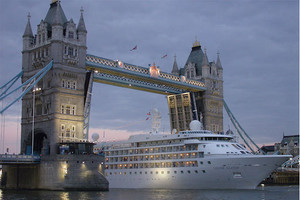
We all know that food is an integral part of today’s cruising experience, but if you have the basics covered, what else do you need to know? Here’s part two of our guide to all things food on board a cruise ship, sorting out what’s new and what’s for you.
(You can read our guide to Cruise Ship dining part one)
Alternative Or Specialty Dining
Alternative dining has become the new normal in the cruising world in recent years, and restaurants fall into two main categories; those which are free of charge, and those you pay extra for. Free alternatives can include pizzerias, sandwich bars, hot dog stands or casual grills, which usually don’t require reservations. The ones you pay for can range from a steakhouse to a sushi restaurant, right up to a high-end gourmet experience with a celebrity chef or a private dinner. They usually incur a surcharge per person anything from $5 to $100 and up, or have menus where you pay a fee for the food ordered, just like a restaurant. Where alternative and specialty dining venues require reservations, most cruise lines offer guests the opportunity of booking in advance before you cruise, which can be a good thing if the restaurant has limited capacity and your cruise is short. Be aware, however, that any charges for dining are often charged to your credit card immediately, although you should be able to cancel or change dates while on board if required. Another tip is to check if any dining packages are available, which offer access to each venue once per cruise at a cheaper rate.
Special Dietary Requirements
Many people have issues with food today, from allergies to specific foods such as nuts or seafood, to the need to follow special diets for health problems such as diabetes or high cholesterol. The good news for anyone considering a cruise, however, is that most dietary needs today are well accommodated. Cruise lines menus in main dining rooms will feature dishes noted as low-salt, healthy eating, etc, and there will usually always be at least one vegetarian option also. If you have a specific allergy issue, especially one which could have serious consequences anaphylaxis, be sure to advise the cruise line when you book, and make sure you take the appropriate medications or an Epipen (auto-injector) with you. You are also advised to check the availability of appropriate foods for your particular problem, such as high cholesterol, before cruising, just to be safe. If you suffer from diabetes and need to eat regularly during the day, this shouldn’t be a problem. Most doctors and dieticians, however, will advise that you take suitable snacks with you just in case, remembering that you may not have refrigeration in your accommodation, and in some countries, such as Australia and New Zealand, you are not allowed to take any foods ashore, or bring them home.
Special Dining Situations
Some cruise lines have unique dining options which it’s worth being aware of, just in case. Communal dining is one, where everyone eats together at the same time, albeit sometimes not with fixed table assignments. This is common on much smaller ships, yachts and adventure cruises were facilities and space is limited. Disney Cruise Line, for example, also has something a little different on offer; you will eat in several different dining rooms during the cruise in a fixed seating arrangement, but each venue has a different theme. On Cunard, however, where you dine depends on the level of accommodation you have booked, a throwback to the old “class” system of cruising. At the bottom end of the scale, you’ll eat in a dining room on a fixed seating basis, but have the option of going to alternative restaurants for a fee. At the top end, however, you have dining rooms which operate on an open seating basis.
Norovirus
When talking about food on board a ship, a few words have to be given over to Norovirus. A common cruise ship illness, although not exclusive to high seas holidays, it produces nasty symptoms including nausea, vomiting and diarrhoea, and is transmitted several ways including person-to-person contact, and by way of contaminated surfaces. Food is another common culprit, so it’s vital to employ proper hygiene practices when you are on a cruise ship. They include always washing your hands before eating, especially when you are using buffets, and after using the bathroom. Also use hand sanitisers regularly when you are frequenting public areas, and when coming back from being ashore.
(You can read our guide to Cruise Ship dining part one)
- By:
- Joanna Hall
Reviews
-
Love Cruising
My wife and I have cruised with Celebrity, Princess and Royal Caribbean and I have to say they are all pretty good when it comes to food with Celebrity being the best, mainly because of the huge number of choices. We love to eat, so we've cruised more with Celebrity than the others. Also the Princess crowd can be a bit older, and the Royal crowd a bit too young!
-
Makes Cruising Cool
Food glorious food! This makes high seas holidays even more appealing. Food is so important in our travels, and I have always thought cruise food would be not the best, but I have friends who have cruised and love it, and this article underlines yet another reason why you should go.....I might just book something romantic for later this year! Any recommendations Ultimate Travel?
-
Well worth reading . . .
I haven't cruised for nearly 20 years when there was alternate dining, but now it's more specialised my juices are flowing. Stealing the words from the author : The good news for me is that anyone considering a cruise is that most dietary needs today are well accommodated. This is good to know as with age comes high cholesterol and diabetes. What I really appreciated in this article is the section on Norovirus, it is worth remembering for any travel you embark on. Well done for this essential information in Cruise Ship Dining 101: Part Two, Everything Else by Joanna Hall.








